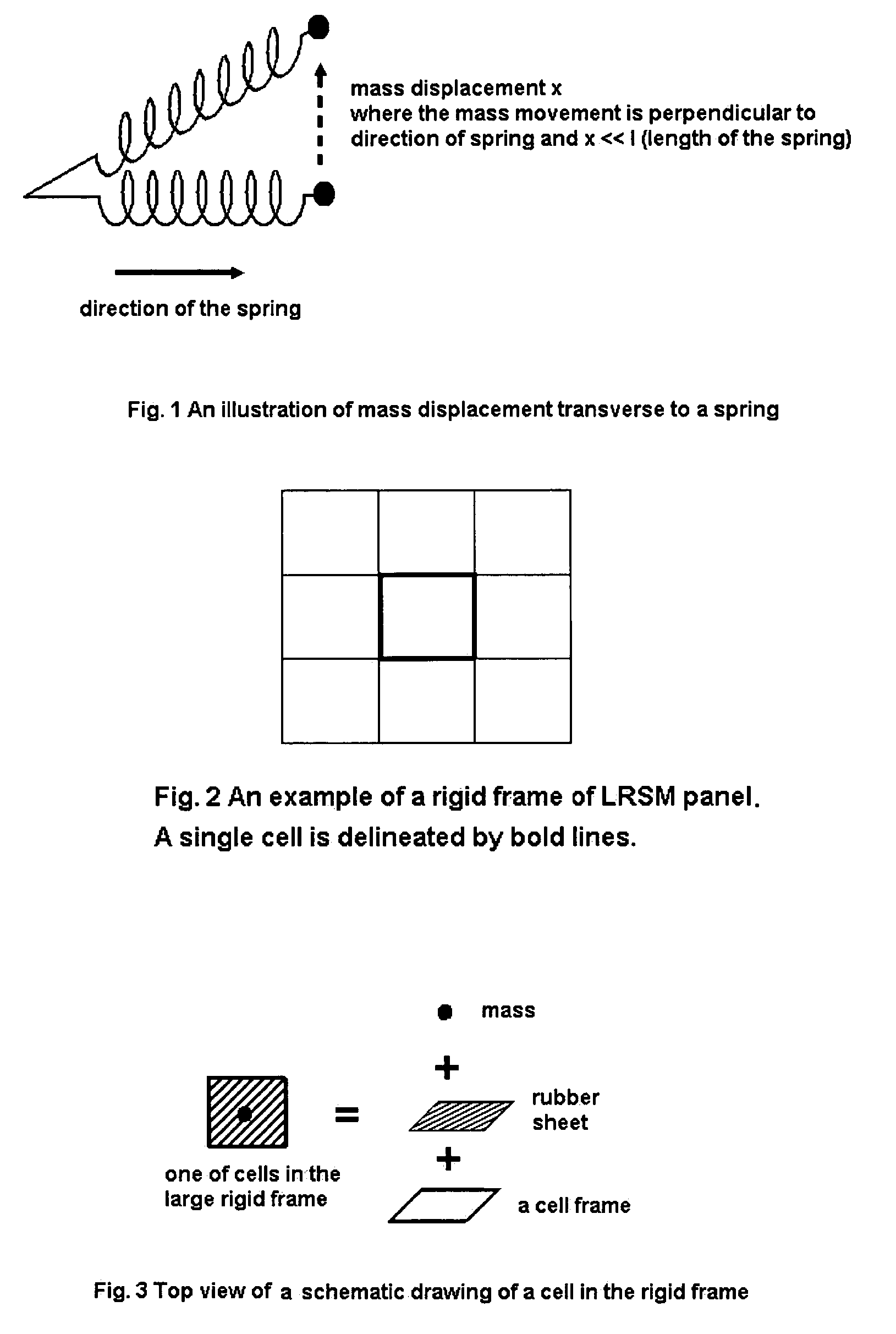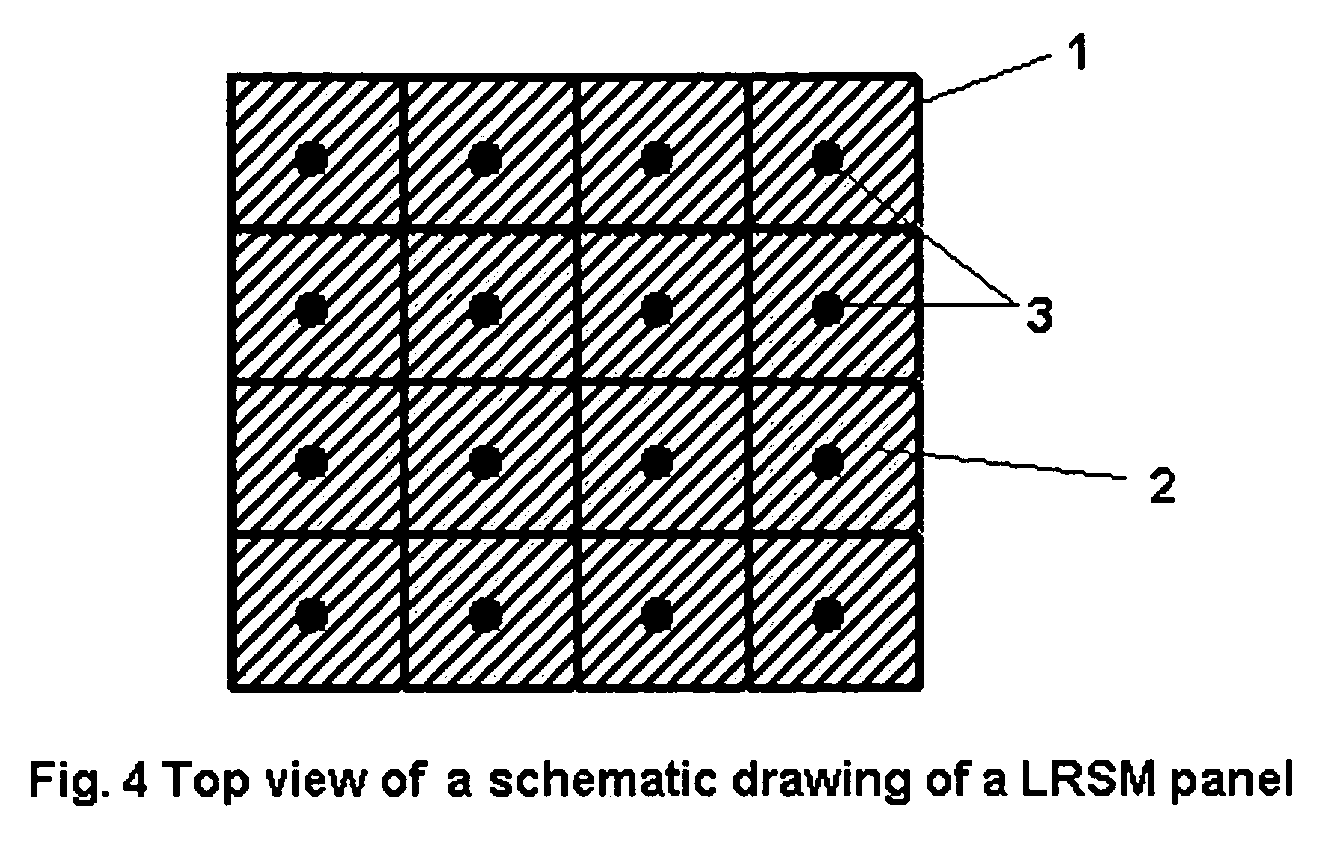Sound attenuating structures
a technology of attenuating structures and sound, applied in fireproofing, instruments, walls, etc., can solve the problems of breaking the mass density law, lrsm can still be fairly thick and heavy, current designs still suffer, etc., and achieve the effect of significantly reducing effects
- Summary
- Abstract
- Description
- Claims
- Application Information
AI Technical Summary
Benefits of technology
Problems solved by technology
Method used
Image
Examples
Embodiment Construction
[0025]The current invention relates to a new type of LRSM design. Basically, the local oscillators can be regarded as composed of two components: the mass m of the oscillator, and the spring K of the oscillator. It is usually counter productive to increase m since that will increase the overall weight of the panels. Hence one should choose to lower K. However, a lower K is usually associated with soft materials, which would be difficult to sustain structurally. In preferred embodiments of the present invention, however, a lower K is achieved through geometric means as will be seen from the following.
[0026]Consider the usual mass-spring geometry whereby the mass displacement x is equal to the spring displacement, so that the restoring force is given by Kx. Consider the case in which the mass displacement is transverse to the spring as shown in FIG. 1. In that case the mass displacement x will cause a spring elongation in the amount of (1 / 2)*l*(x / l)2=x2 / 2l, where l is the length of th...
PUM
| Property | Measurement | Unit |
|---|---|---|
| mass | aaaaa | aaaaa |
| thickness | aaaaa | aaaaa |
| mass | aaaaa | aaaaa |
Abstract
Description
Claims
Application Information
 Login to View More
Login to View More - R&D
- Intellectual Property
- Life Sciences
- Materials
- Tech Scout
- Unparalleled Data Quality
- Higher Quality Content
- 60% Fewer Hallucinations
Browse by: Latest US Patents, China's latest patents, Technical Efficacy Thesaurus, Application Domain, Technology Topic, Popular Technical Reports.
© 2025 PatSnap. All rights reserved.Legal|Privacy policy|Modern Slavery Act Transparency Statement|Sitemap|About US| Contact US: help@patsnap.com



